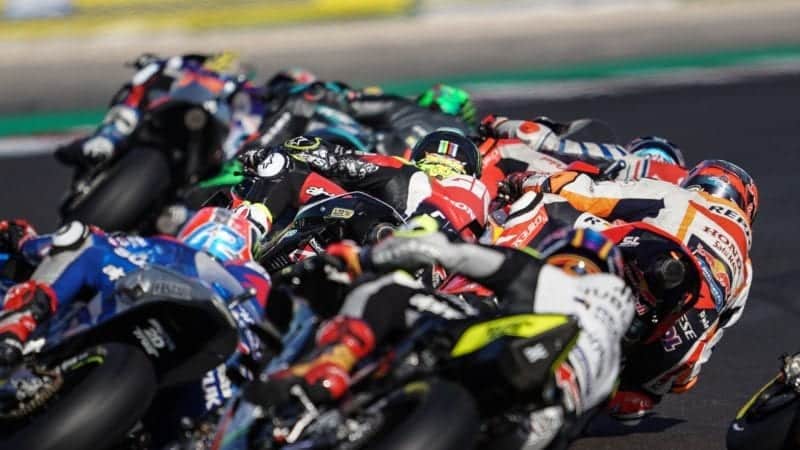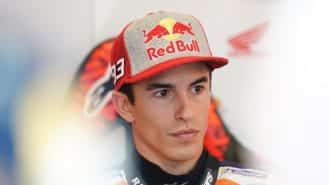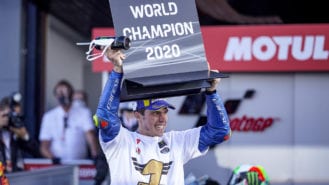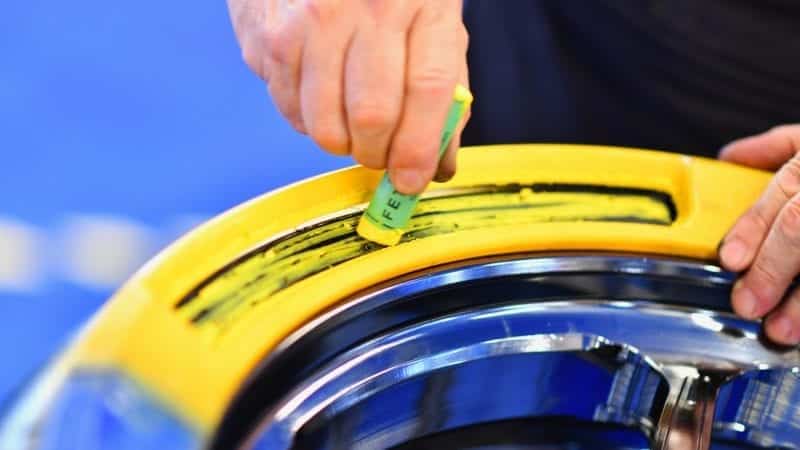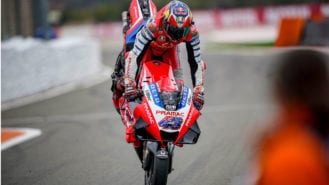During 2019, Márquez climbed the podium at 18 of the 19 races and in 2018 he made the top three at 14 of the 18 races.
I think Márquez’s 2019 campaign is probably the greatest of all time. To achieve that kind of speed and consistency – 12 victories and six second places for a podium hit rate of 94 per cent – at a time when the bikes are so close and the top riders so talented is breathtaking. Especially now we’ve just seen the 2020 championship won with a 50 per cent podium hit rate.
Of course, there is a reason for the inconsistency of Mir, Dovizioso and the rest. MotoGP’s Michelin spec tyres have a narrow operating window, so it’s not easy for the riders and their bikes to get inside that window at every race, according to different circuit layouts, track temperature and so on.
Therefore if you want to thank anyone for the thrilling unpredictability of MotoGP 2020 you need to thank Márquez and Michelin.
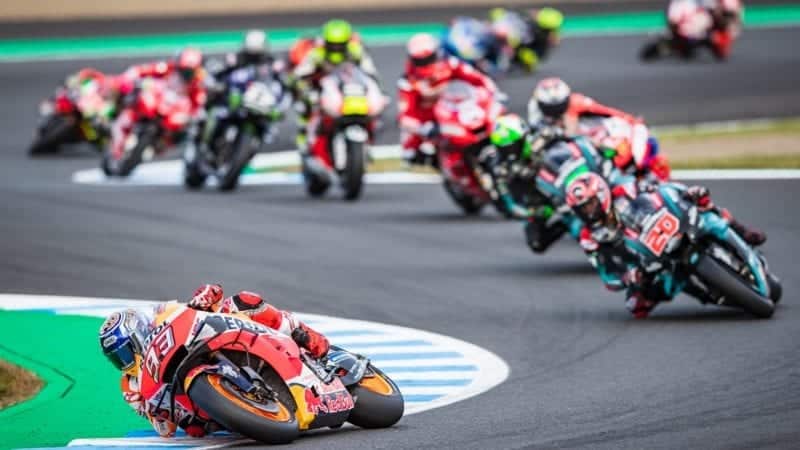
Using all the grip and a bit more – Márquez leads the first lap at Motegi 2019
Honda
“Sometimes you hit the jackpot with the tyres, other times you lose the shirt off your back,” a factory engineer told me a while back. “It’s a gamble – that’s why it changes every week.”
Just a few degrees of track temperature can make a huge difference – from being in the podium fight to struggling to stay inside the top ten.
At Barcelona in September, KTM rider Pol Espargaró was second fastest in FP4, 0.03sec off the fastest time. In the race he was half a second off the fastest riders and eventually crashed out of eighth place.
“On Saturday and in the race we used the medium front,” says Espargaro. “On Saturday it was sunny, then on Sunday it was cloudy and we were in trouble. When you have that small window then small changes can completely change your race.
“When the tyres aren’t working with your bike you can’t get the best out of the tyres, but this does make the championship more open, which is nice for the fans.”
Most riders and teams don’t complain about the narrow performance window of the Michelins. “It can be a bit crazy, but it’s the same for everybody,” says Wilco Zeelenberg, team manager at Petronas Yamaha.
